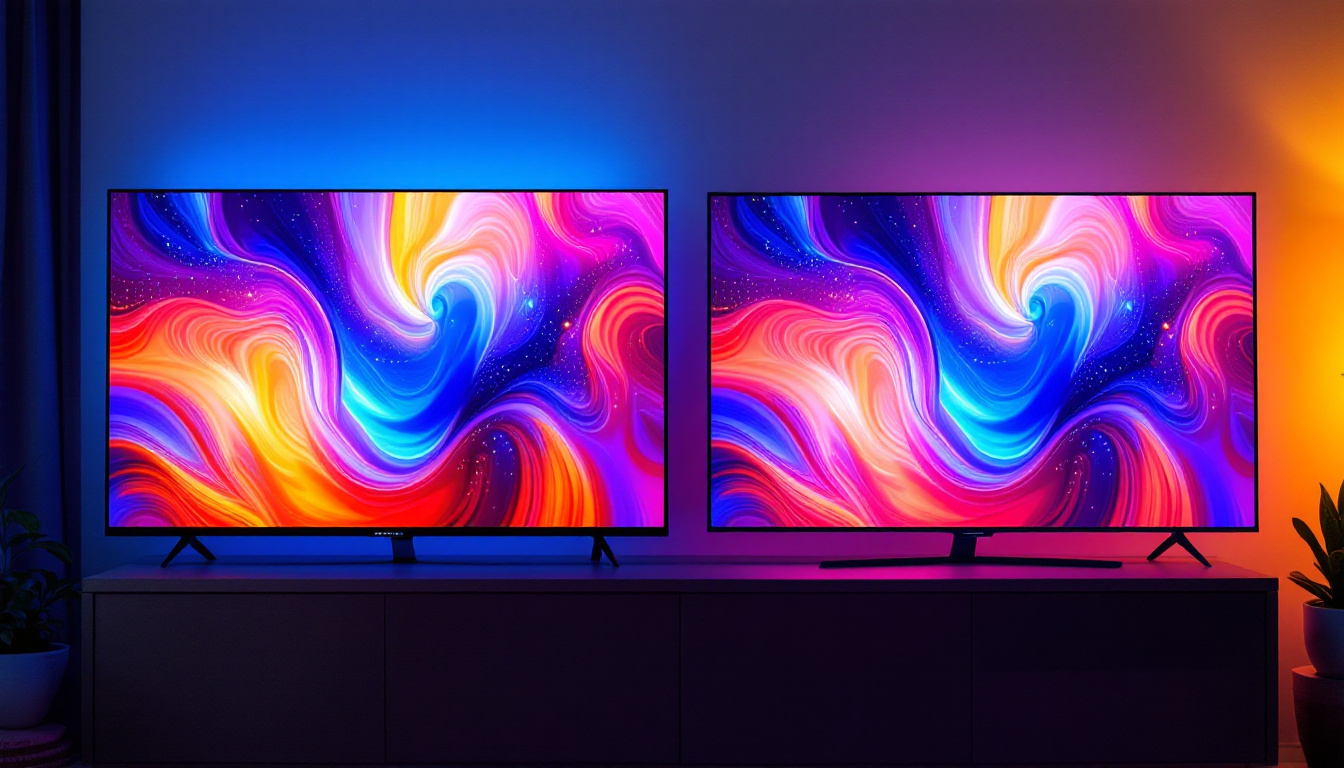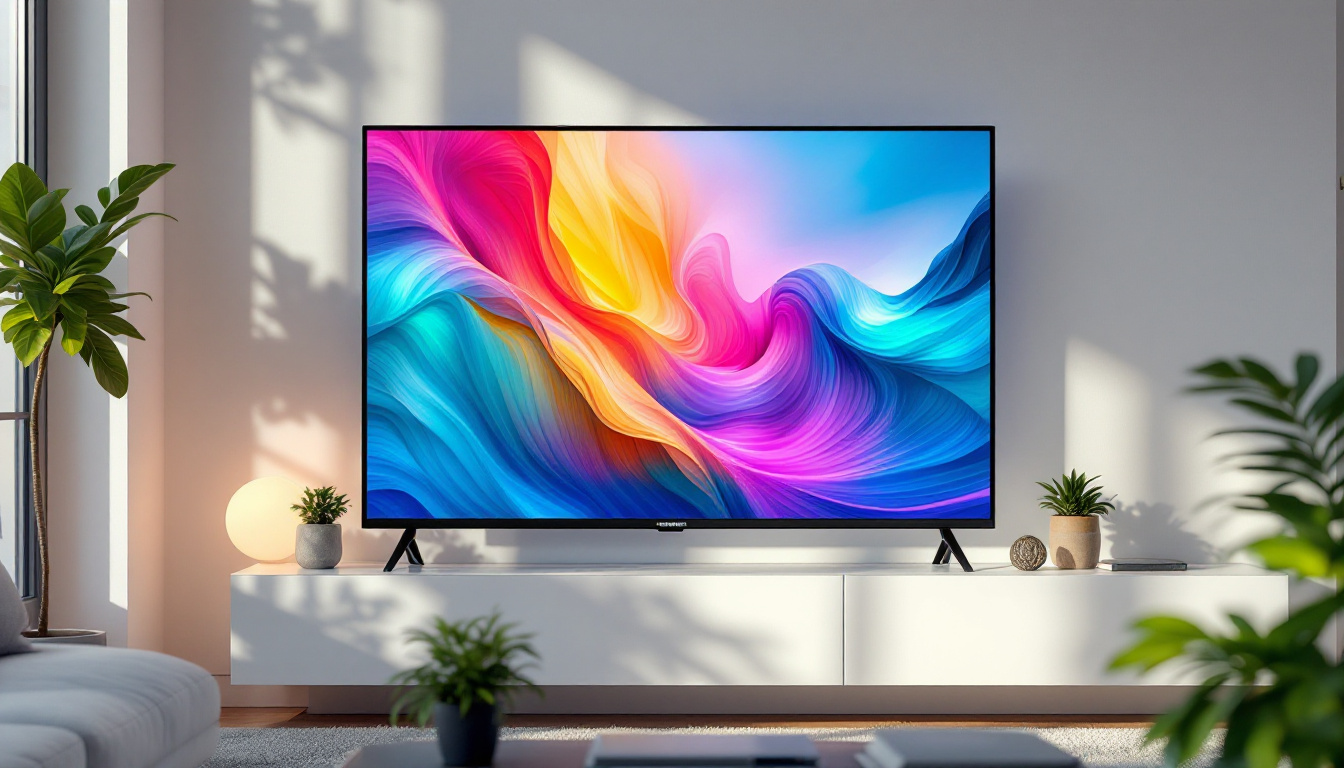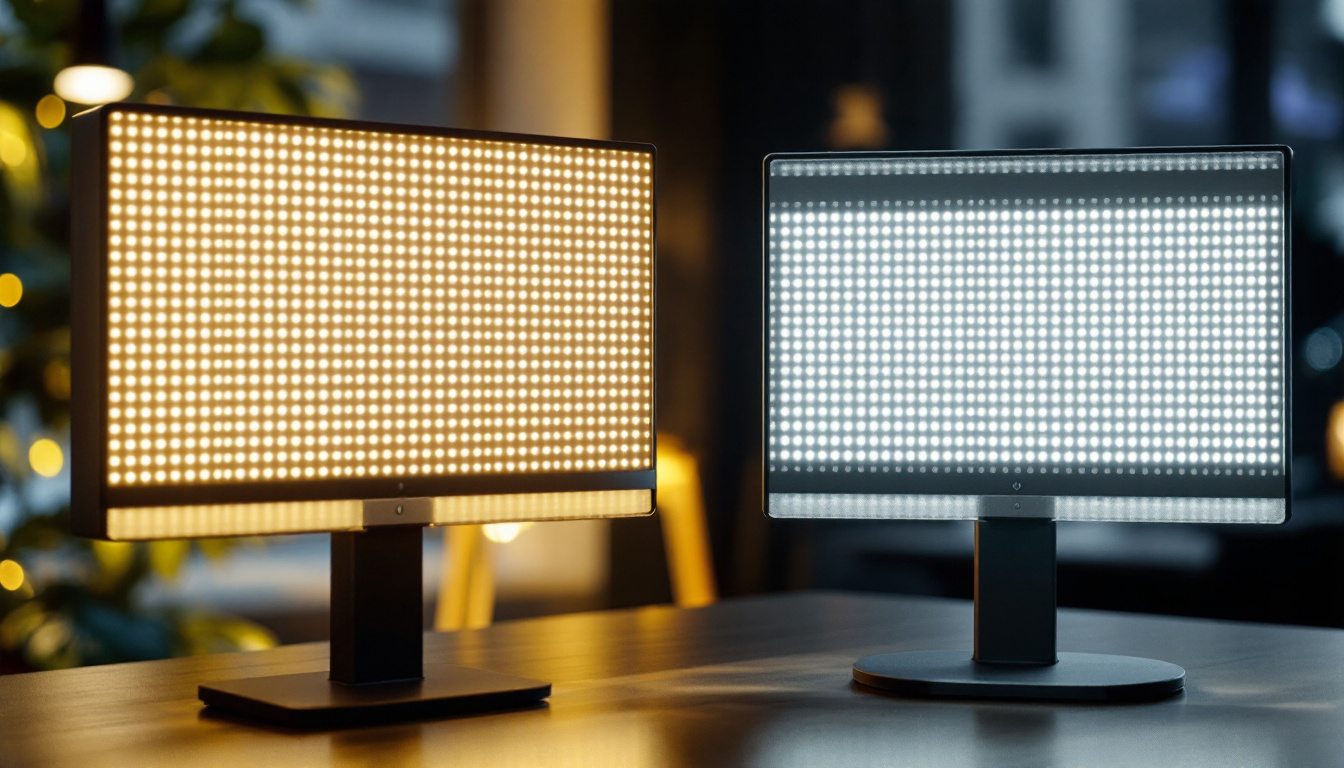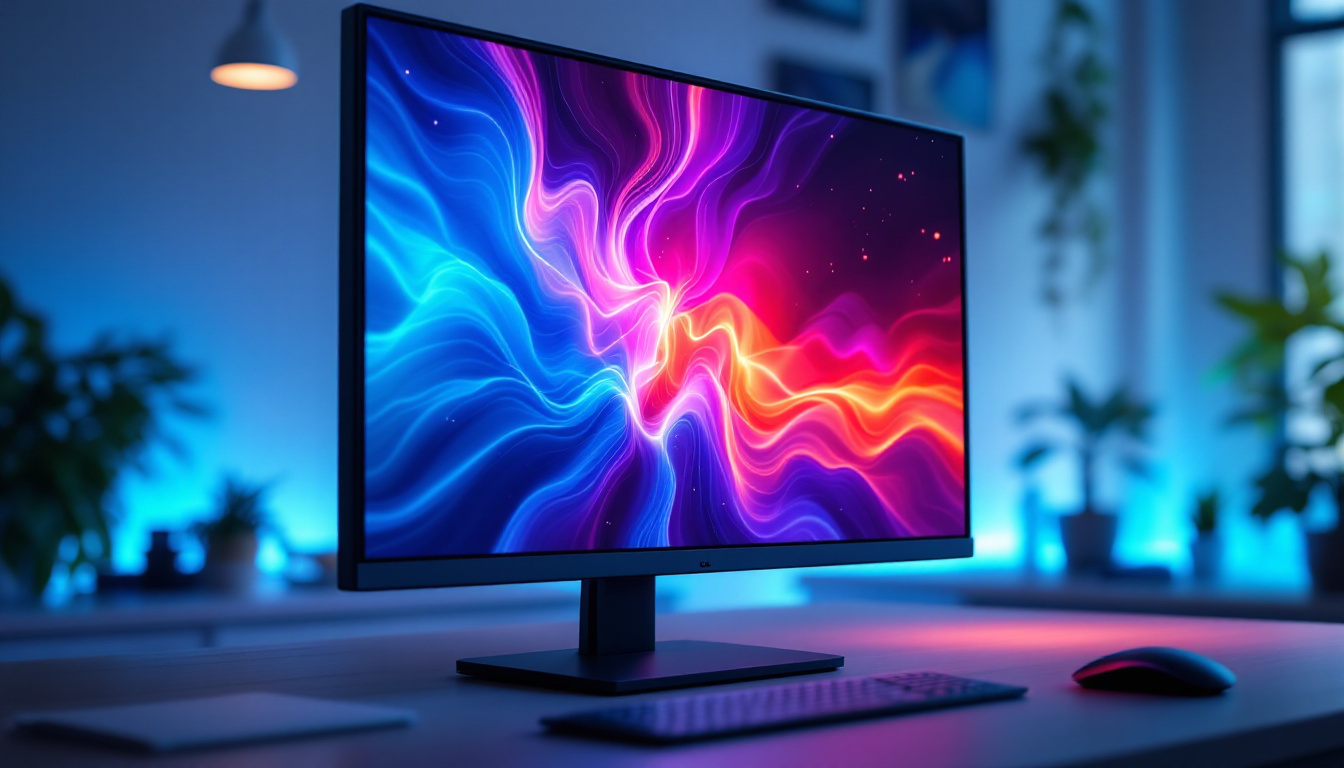Touch Screen TV: LED Display Explained
In the ever-evolving landscape of technology, touch screen televisions represent a significant advancement in how we interact with visual media. Combining the intuitive nature of touch interfaces with the vibrant display capabilities of LED technology, these devices are reshaping the viewing experience. This article delves into the intricate workings of touch screen TVs, focusing on LED displays, their advantages, and their applications.
Understanding LED Technology
LED, or Light Emitting Diode, technology has transformed the way images are displayed on screens. Unlike traditional LCDs that rely on fluorescent backlighting, LED displays utilize a matrix of tiny light-emitting diodes to create images. This results in a brighter, more energy-efficient display that can produce deeper blacks and a wider color gamut.
The Basics of LED Displays
At its core, an LED display consists of multiple diodes that emit light when an electric current passes through them. These diodes can be arranged in various configurations, such as edge-lit or full-array, to enhance the viewing experience. Edge-lit LED displays have diodes positioned along the edges of the screen, while full-array displays feature diodes distributed across the entire panel, allowing for more precise local dimming and better contrast.
One of the key advantages of LED technology is its ability to produce brighter images compared to traditional displays. This brightness not only enhances visibility in well-lit environments but also contributes to the overall vibrancy of the colors displayed. As a result, LED TVs have become the preferred choice for consumers seeking high-quality visual experiences. Additionally, LED technology has paved the way for innovations such as OLED (Organic Light Emitting Diode) and QLED (Quantum Dot LED), which further enhance color accuracy and viewing angles, making the evolution of display technology an exciting field to explore.
Advantages of LED Displays
LED displays offer numerous benefits that make them a popular choice among consumers and manufacturers alike. First and foremost, their energy efficiency is a significant advantage. LED technology consumes less power than traditional display technologies, leading to lower electricity bills and a reduced carbon footprint.
Moreover, LED displays are known for their longevity. With a lifespan that can exceed 50,000 hours, these displays are built to last, minimizing the need for frequent replacements. This durability is particularly appealing in settings where screens are used extensively, such as in commercial environments or educational institutions. Furthermore, the lightweight nature of LED displays allows for easier installation and transportation, making them ideal for a variety of applications, from home theaters to large-scale outdoor advertising. The versatility of LED technology also extends to its ability to be incorporated into flexible displays, opening up new possibilities for creative design and functionality in both consumer electronics and architectural applications.
Touch Screen Technology: An Overview
Touch screen technology has revolutionized the way users interact with devices. By allowing direct interaction with the display, touch screens eliminate the need for traditional input methods like keyboards and mice. This intuitive approach has made touch screens increasingly popular in various applications, from smartphones to tablets and now, televisions.
How Touch Screens Work
Touch screens operate using one of several technologies, including resistive, capacitive, and infrared. Resistive touch screens consist of two flexible layers separated by a small gap. When pressure is applied to the screen, these layers make contact, registering the touch. While this technology is cost-effective and can be used with any object, it is less responsive than other methods.
Capacitive touch screens, on the other hand, utilize the electrical properties of the human body to detect touch. These screens are coated with a transparent conductor, and when a finger touches the screen, it creates a change in the electrostatic field. This technology allows for multi-touch capabilities and a more responsive user experience, making it the preferred choice for modern devices.
Integration of Touch Technology in TVs
The integration of touch technology in televisions has opened up new avenues for interaction. Touch screen TVs allow users to navigate menus, select content, and control settings with simple gestures. This hands-on approach enhances user engagement and makes the viewing experience more interactive.
Furthermore, touch screen TVs can serve as multifunctional devices. They can be used for video conferencing, gaming, and even as interactive whiteboards in educational settings. This versatility makes them an attractive option for both home and commercial use.
In addition to their multifunctionality, touch screen TVs are increasingly incorporating voice recognition and gesture control technologies. These advancements further enhance the user experience by providing alternative ways to interact with the device, catering to a wider range of preferences and accessibility needs. For instance, users can simply wave their hand to change channels or use voice commands to search for their favorite shows, making the technology not only more user-friendly but also more inclusive.
Moreover, the rise of smart home technology has led to the development of touch screen TVs that can seamlessly integrate with other smart devices. Imagine controlling your lighting, thermostat, and security system all from your TV screen. This interconnectedness not only simplifies the user interface but also creates a centralized hub for managing various aspects of a smart home, making daily life more convenient and efficient.
The Benefits of Touch Screen TVs
Touch screen TVs offer a range of benefits that enhance the overall viewing experience. One of the most significant advantages is the ease of use. With a touch interface, users can quickly access their favorite shows, adjust settings, and browse content without the need for complicated remote controls.
Enhanced User Interaction
The interactive nature of touch screen TVs fosters a more engaging viewing experience. Users can swipe through menus, pinch to zoom on images, and even draw or annotate directly on the screen. This level of interactivity is particularly beneficial in educational and professional settings, where collaboration and participation are key.
Moreover, touch screen TVs can facilitate social interactions. For instance, families can gather around the screen to play games or watch movies together, using the touch interface to enhance their collective experience. This social aspect of touch screen technology makes it a valuable addition to any home entertainment system.
Accessibility Features
Touch screen TVs also offer significant advantages in terms of accessibility. For individuals with mobility challenges, a touch interface can be easier to navigate than traditional remote controls. Voice command features, often integrated with touch technology, further enhance accessibility, allowing users to control their TVs with simple voice commands.
Additionally, touch screen TVs can be customized to suit individual preferences. Users can adjust settings such as text size, contrast, and color schemes to create a more comfortable viewing experience. These accessibility features ensure that touch screen TVs cater to a diverse audience, making entertainment more inclusive.
Challenges and Considerations
While touch screen TVs offer numerous benefits, they are not without their challenges. One of the primary concerns is the potential for screen smudges and fingerprints. Touch screens are more susceptible to marks from fingers, which can detract from the viewing experience. Manufacturers have developed various coatings and cleaning solutions to mitigate this issue, but it remains a consideration for potential buyers.
Cost Implications
Another challenge associated with touch screen TVs is the cost. Generally, these devices tend to be more expensive than their non-touch counterparts. The advanced technology and features integrated into touch screen TVs contribute to this higher price point. Consumers must weigh the benefits of touch functionality against their budget when considering a purchase.
Additionally, the market for touch screen TVs is still developing. While there are several options available, the variety may not be as extensive as traditional LED TVs. This limited selection can make it challenging for consumers to find a model that meets their specific needs and preferences.
Future Trends in Touch Screen TV Technology
The future of touch screen TV technology looks promising, with several trends emerging that are likely to shape the industry. As technology continues to advance, manufacturers are exploring ways to enhance the functionality and user experience of touch screen TVs.
Integration with Smart Home Systems
One of the most significant trends is the integration of touch screen TVs with smart home systems. As homes become increasingly connected, touch screen TVs can serve as central hubs for controlling various devices. Users will be able to manage lighting, security systems, and even thermostats directly from their TV screens, creating a seamless smart home experience.
This integration will not only enhance convenience but also improve energy efficiency. By allowing users to monitor and control their home environment from a single device, touch screen TVs can contribute to more sustainable living practices.
Advancements in Display Technology
Another trend to watch is the continuous improvement in display technology. As manufacturers strive to create even more vibrant and immersive viewing experiences, advancements like OLED and MicroLED are becoming more prevalent. These technologies promise better color accuracy, contrast, and energy efficiency, further enhancing the appeal of touch screen TVs.
Moreover, as augmented reality (AR) and virtual reality (VR) technologies evolve, touch screen TVs may incorporate these features, providing users with interactive and immersive experiences that go beyond traditional viewing.
Conclusion
Touch screen TVs represent a significant leap forward in the way viewers interact with their entertainment systems. By combining the intuitive nature of touch technology with the vibrant display capabilities of LED technology, these devices offer a unique and engaging viewing experience. While there are challenges to consider, the benefits of touch screen TVs, including enhanced user interaction, accessibility features, and future advancements, make them an exciting option for consumers.
As technology continues to evolve, it is clear that touch screen TVs will play a pivotal role in shaping the future of home entertainment. With ongoing innovations and improvements, these devices are set to redefine how audiences engage with their favorite content, making the viewing experience more interactive, accessible, and enjoyable than ever before.
Discover the Future of Visual Engagement with LumenMatrix
Ready to elevate your viewing experience with the latest in LED display technology? LumenMatrix is at the forefront of innovation, offering a wide range of LED display solutions that bring your content to life. From Indoor and Outdoor LED Walls to specialized displays for vehicles, sports, and even floors, our products are designed to captivate and engage. Embrace the future of home entertainment and commercial visual communication with LumenMatrix. Check out LumenMatrix LED Display Solutions today and transform the way you share your message with the world.































